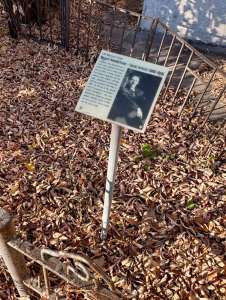Writing for Women’s Equality
Icelandic newspapers and periodicals helped migrant Icelanders in North America adapt to their new cultural, political, and social environment. As the Icelanders grew more at home, their taste for social criticism and advocacy began to grow. Over time, Icelandic publications dedicated to specific social and political causes began to appear.
One of the most remarkable publications of this kind was the magazine Freyja. It was published in Selkirk, Manitoba starting in 1898 by Margrét Benedictsson and her husband Sigfús. Margrét served as editor while Sigfús ran the couple’s publishing company. Freyja’s aim was to promote women’s economic, political, and social equality, including the right to vote and hold public office.
Icelandic migrants arrived from a country where the movement for women’s equality already had considerable momentum. Icelandic migrants in Manitoba, both women and men, had already begun advocating for women’s suffrage in print and in public addresses by the mid 1880s. In 1889 and 1890, Sigfús Benedictsson presented lectures on women’s emancipation in Winnipeg and Riverton. Margrét delivered her first lecture on women’s equality in Winnipeg in February 1893.
Five years later, the first issue of the couple’s Freyja appeared. A typical issue contained articles, poems, short stories, serialized novels, biographical sketches, reviews, a “children’s corner,” and listings of community events. Margrét herself wrote many articles and stories published in Freyja, sometimes under male pen names. Sigfús was a frequent contributor too. Margrét also translated and published the writings of women’s rights advocates Elizabeth Cady Stanton, Lois Waisbrooker, and Helen Gardener, to name a few.
Already by its second year, Freyja had five hundred subscribers. In 1902, Margrét and Sigfús moved to Winnipeg where they continued to publish Freyja. A few years later, in January 1908, Margrét helped launch and became president of an Icelandic suffrage organization in the city. Icelandic women in both Gimli and Argyle launched similar groups shortly afterward.
By 1910, Freyja counted no less than 1200 subscribers in Canada, the USA, and Europe. That same year, however, the magazine abruptly ceased publication. Margrét and Sigfús had divorced four years earlier on terms that allowed for their printing and publishing company to continue operations. In May of 1910, however, the arrangement fell apart. Margrét left Winnipeg for Washington state in 1912 and lived there for the rest of her life.
Icelandic migrants continued to support the suffrage movement in Manitoba, which gained energy in 1912 with the creation of the Political Equality League. Four years later, on January 28, 1916, Manitoba’s government passed a bill granting women the right to vote and hold public office in the province. However, many racialized women and men waited decades to gain the same rights.
Olga Skaftfeld recalls her family’s attitudes toward women’s suffrage and the battle for gender equality. Enjoy this audio clip with an English transcript.
Like all migrants, Icelanders in North America faced pressure to conform to mainstream values. However, Freyja and other publications aimed at promoting things like workers’ rights, socialism, pacifism, and temperance demonstrate that they also maintained a strong tradition of social criticism and advocacy.





